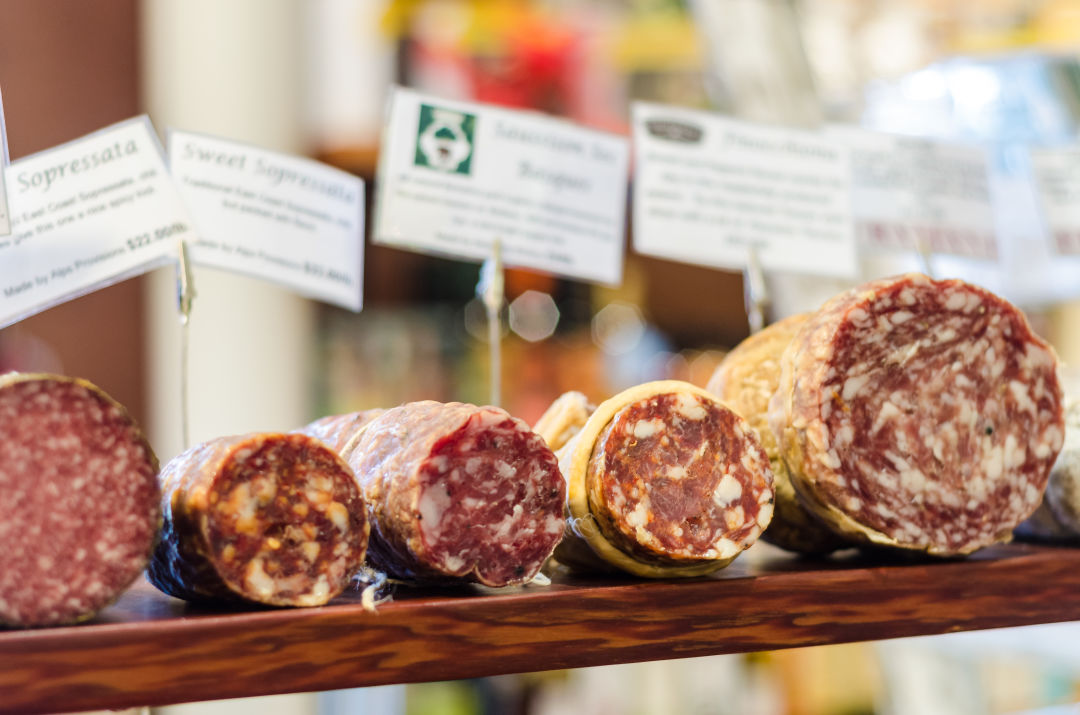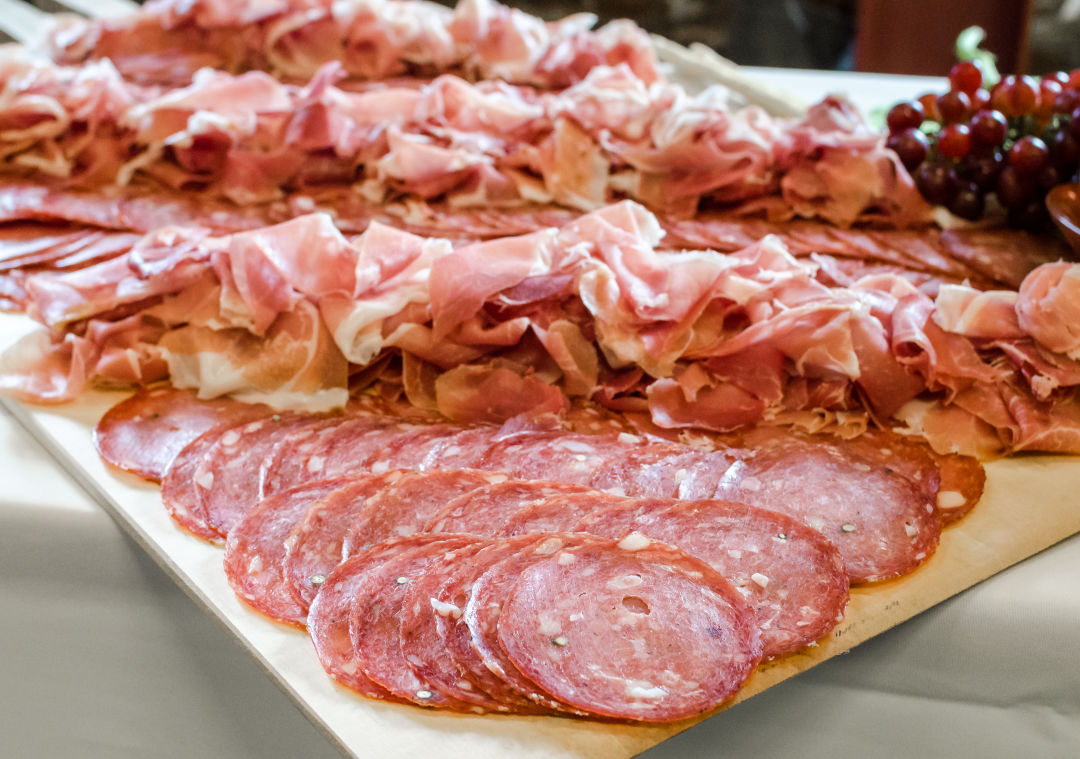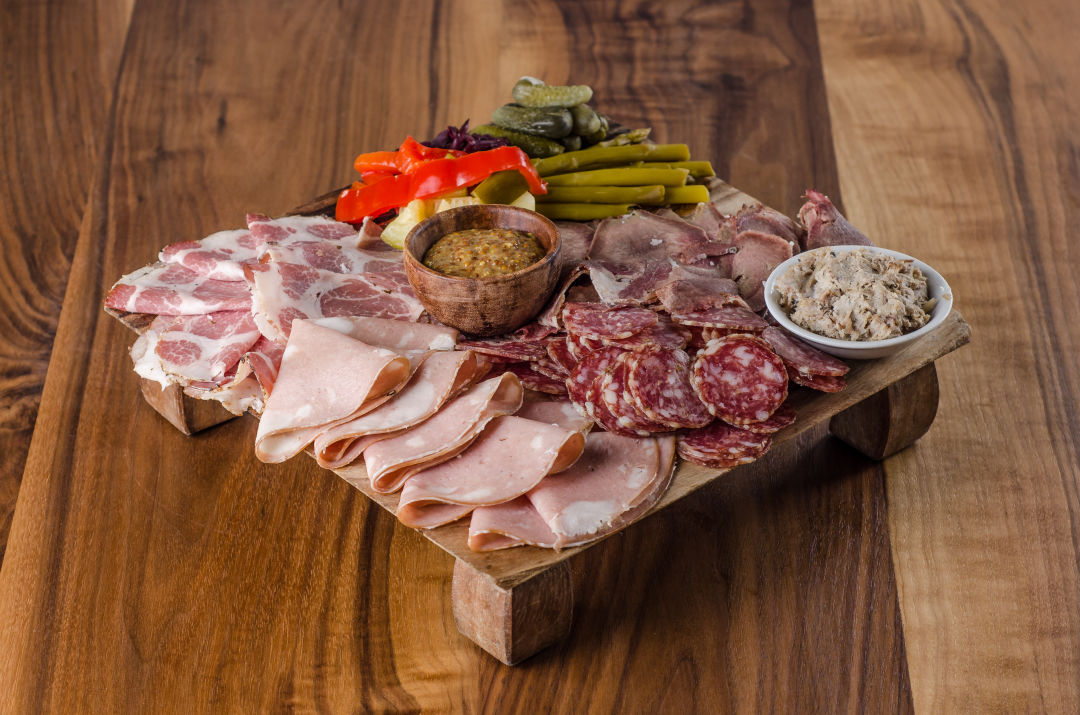Five Charcuterie & Wine Pairings

Wine and cheese are kindred spirits and one of life’s many pleasures. But charcuterie is every bit as great a partner for wine as cheese, if not more so. Like any successful food and wine pairing, the best wine matches for charcuterie celebrate the meat’s finest attributes without overpowering it--and let the wine shine.
Northwest classics: Pinot Noir with Pork Pâté
Pinot Noir is an incredibly versatile varietal. If you learn one thing from this article, make it this: You can pair Pinot Noir with pretty much any charcuterie to great effect. The tannins are mellow and well integrated, making it a light-to-medium-weight wine. Pinot Noir, like and other lighter wines such as Beaujolais, have a purity of fruit, juicy acidity and silky tannins, that makes it a perfect companion to food.
Pinot Noir has enough acid to cut through the fat of an herbaceous garlic fatty pâté. Likewise, it’s also a perfect partner for French-style pork rillettes made with amazing Hazelnut fed pork from the Willamette Valley. If you want to bring out the forest floor notes of Pinot, pair it with a pork-based charcuterie containing mushrooms.

Rustic reds and smoky hams
For big, hearty reds with bold tannins such as Cabernet Sauvignon, Malbec, Petite Sirah and Zinfandel, turn to charcuterie that has similar flavors. One of our favorite pairings is Speck (a heavily smoked northern Italian cured ham) with old-vine Zinfandel. There are gobs of brambly fruit in the wine, plus you will sometimes find a woody smokiness that is mimicked in the ham, making these a natural pairing.
Some like it hot: Cabernet Sauvignon and Olympia Provisions Saucisson D’Alsace
Pairing a low acid, higher-alcohol wine is not an easy task due to the lack of acidity, one of the main components in food friendly wines. Pairing a high-alcohol wine with food that has a high salt content can make the wine come across as “hot.”
If you enjoy drinking more full-bodied red wines with higher alcohol, such as Cabernet Sauvignon or Merlot, avoid pepper-crusted salami or other meats with heavy spices. Heat-spiciness can ruin a wine, so for this pairing we went with a salami that is warm with baking spices like clove and nutmeg—but not too heavy on black pepper. Bresaola (air-cured beef filet), which can stand up to fuller red wines, is another good choice for or an older, smooth red wine.
Duck, duck, Lambrusco!
We always make duck rillettes for the holidays. Duck is a rich meat that tends to need a wine with some sharpness and acidity to cut through the fat and some ripe fruit to contrast with the rich flesh. People will often reach for Pinot Noir. A great choice. But depending on how the duck is prepared, there are a variety of wines that complement it. Serious ‘cru’ Beaujolais with ripe cherry flavors can be delicious with cold duck or duck rillettes, paté or terrines. Or turn, again, to bubbles: crimson red bubbles. A chilled Lambrusco secco is a delightful pairing for a lot of charcuterie, including duck rilletes.

Prosciutto and Riesling
Prosciutto, serrano and lighter hams that have a sweet-and-salty balance pair well with wines that have sweet fruit and plenty of acidity. Think Riesling, Lambrusco, Moscato, Chenin Blanc, and Zinfandel. Take a crisp dry Riesling from Washington State. The acidity adds a nice contrast to the fat of the meat. And the contrast of the fruity flavors bring out the nuttiness of the meat.
When creating wine and charcuterie pairings play with versatility and remember you do not always have to match power with power or finesse with finesse. Juxtaposition can be attention-getting and more memorable. And salt and alcohol are not always best of friends. And, if all of this is leaving your head spinning, come in and let us put together a delicious selection!
Get more tips for choosing and pairing wines – including our favorite affordable wines for holiday entertaining – on our website at www.elephantsdeli.com.
